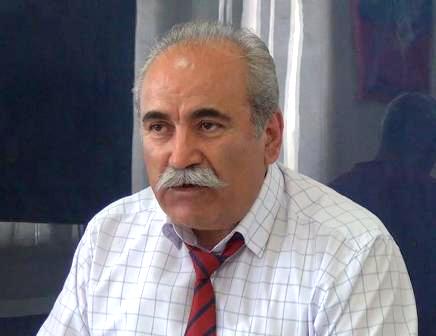 Since the Armenian Issue (Question) initiation (1878) and the period after the Genocide of the Armenians (1894-1923) the new agenda (national program) for the final settlement of the Armenian Issue has not been formed, with the exception of the Newest armed liberation struggle and activity program during 1973-1985 period.
Since the Armenian Issue (Question) initiation (1878) and the period after the Genocide of the Armenians (1894-1923) the new agenda (national program) for the final settlement of the Armenian Issue has not been formed, with the exception of the Newest armed liberation struggle and activity program during 1973-1985 period.
Instead Armenians abroad put on their agenda the discussions on the formation of local communities, preservation of the Armenian people, the Genocide of the Armenians recognition and the issues related to the future of Soviet Socialist Republic of Armenia.
The revival and the development of Soviet Socialist Republic of Armenia, the issues of repatriation were on the Soviet Republic of Armenia’s agenda.
The issues of Armenians of Artsakh, Artsakh and Republic of Armenia’s security, aggression prevention and blockade reduction, self-determination, freedom and the establishment of independence and maintenance were on the Republic of Armenia’s agenda.
And as in the late 1980’s and early 1990’s, Armenian social and political thought, in general, was not ready for the impending reality of Armenia’s independence, so today it is not ready to irreversible impending reality of the Western Armenia’s (including Cilicia) independence.
Today, however, we tend to believe that the ultimate resolution of the Armenian Issue’s new agenda is being formed during 2004-2014 period, when on December 17th, 2004, in Shushi (Artsakh, Karabagh) the National Council of Armenians from Western Armenia was established. On the same day a Declaration on the Right to Self-Determination of the Armenians of Western Armenia has been adopted and in 2007 the Armenians of Western Armenia as an indigenous people, asserted their right to self-determination. On February 4, 2011 the beginning of the process of formation of the Government-in-Exile of Western Armenia was announced (now – the Government of the State of Western Armenia). In November 2013, through direct elections via Internet, the National Assembly (Parliament) of Western Armenia was formed, whose deputies at the first session of the Parliament on January 20, 2014, in Paris, elected the President of Western Armenia.
There should be a special mention about the activities carried out since 2006 within the framework of National Council of Western Armenia UN Expert Mechanism on Indigenous peoples, and the establishment of Public Institutions of Western Armenia for preservation of the existence and identity of the Armenian people. This forms the basis of the legal and political system of the State of Western Armenia, which also implements the whole process of protecting the rights of Armenians of Western Armenia.
Thus, it is obvious that the new agenda on the regulation of the Armenian Issue and the issue of protecting the rights of Armenians of Western Armenia is closely related to two main questions:
a)The protection of rights of Armenians of Western Armenia towards Western Armenia, more strictly the protection of the rights of Armenians in Armenia,
b) The formation of the State system of Western Armenia (Armenia).
We also note that for many, the Western Armenia is by mistaken considered as a lost territory and few people know that the State of Armenia was recognized as Armenian State by Paris Assembly as early as January 19, 1920. Many people do not value the important decisions made in 1920, which refers to the boundary configuration of the State of Armenia with Turkey, drawn by 28th U.S. President Woodrow Wilson’s Department of State Arbitral Award and taken decisions are available in the peaceful Treaty of Sevres.
In fact, to date, the decisions taken on the same international political and legal arena are sufficient already for the existence of the State of the Western Armenia (State of Armenia).
The existing counter-argument stated that if the Armenians did not live in these areas because of Genocide, consequently, decisions on the State of Armenia lost their relevance. But there are other nationalities besides Armenians, whose rights are being violated till now as well and also the Islamized Armenians living there are returning to their identity.
Consequently, the establishment of State of the Western Armenia with boundary configuration, drawn by Wilson’s Arbitral Award, again becomes urgent and could serve as a key to regional peace and peaceful cooperation.
In that sense, thanks to widely-known internationally legal papers on the Armenian Issue and recently revealed other important little-known documents and also formulated nowadays political-legal acts by the continuers of those who struggle for the protection of rights the existence of the State of Western Armenia becomes both reasonable and totally justified from legal and political point of view.
For those people, who know little about the current existence of the Western Armenia’s State structures, may seem incredible, as they are not recognised by other States, including Armenia. But we think this is a demanded format, which so far has not been used and judging by the obvious interest towards this structure by number of leading countries, it is clear that this format is the only real and productive for the full and final settlement of the Armenian Issue.
Saida Ohanyan,
Head of the International women’s union of Hamshen Armenians «HAMSHENIAN»,
Deputy of National Assembly (Parliament) of Western Armenia
P.S.
This article is based on normative acts of the Republic of Western Armenia







